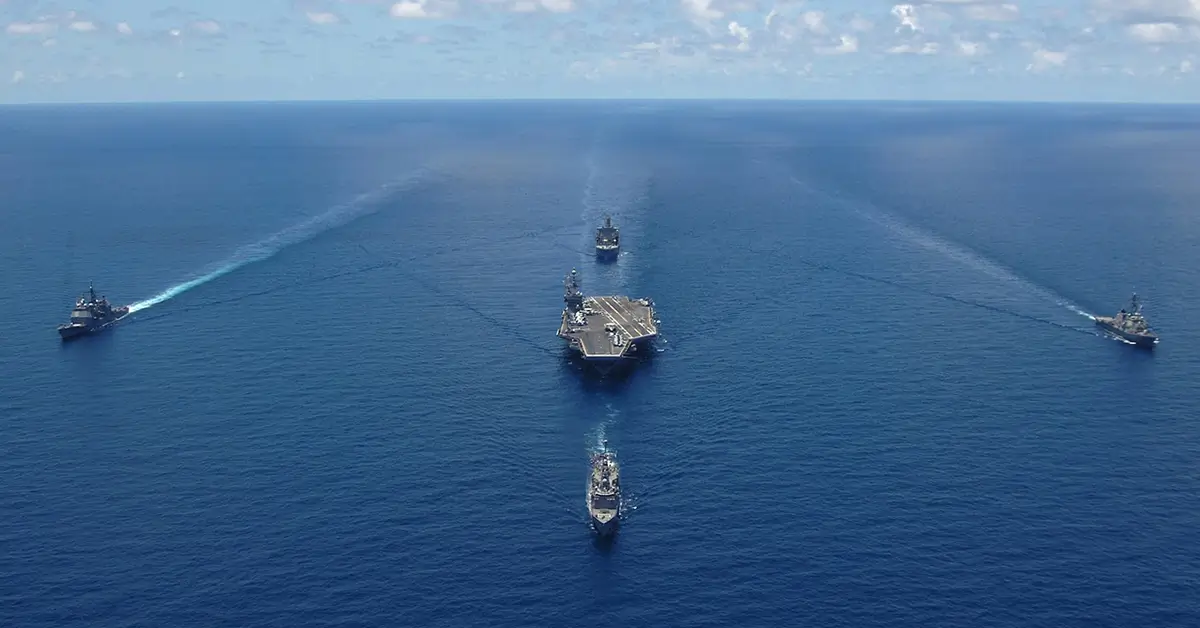Emerging trends and developments across the global defense landscape have catalyzed a shift within the United States toward new strategies, new technologies and refocused priorities. With factors such as the Russia-Ukraine conflict, the commercialization of space and the looming peer and near-peer threat, U.S. defense leaders are rethinking what the future looks like.
Executive Mosaic spoke with Robert Geckle, chairman and CEO of Airbus U.S. Space and Defense and a 2023 Wash100 Award winner, to learn how aerospace and defense contractors are looking at these threats and what these changes could mean in the long-term.
Geckle’s career with Airbus spans not only operations in the U.S. but also abroad, giving him a unique global perspective on the conversation around America’s efforts to achieve and maintain technological superiority.
Read below for Geckle’s full interview.
What’s your outlook on the global defense landscape? What significant changes or trends are you seeing, and how are those factors moving the GovCon industry market?
I see three major recent trends. First is a big transition from what we used to call the global war on terror, or GWOT, and its associated systems and platforms, towards a focus on peer and near-peer threats.
Coupled with that, number two is an acceleration of the focus on data or network-centric warfare. Platforms are still important, but having low latency communications and data sharing across all domains, all branches and including allies, is a huge thrust for the DOD right now.
And lastly, I’d be remiss if I did not mention Ukraine. The war in Ukraine has really been an important reminder of the importance of deterrence as well as a renewed focus on near-term capabilities — things like munitions — and readiness of those elements. More broadly, I think it has also reinforced the transatlantic NATO alliance and the importance of allied integrated defense. Those are the key trends that I see driving a lot of the activity on the DOD side, the industry side and even amongst allies.
What are our biggest threats in space, and how are we addressing those threats to maintain our space superiority, especially during this era of increasing competition?
Whether we like it or not, space is now a warfighting domain. We’re seeing an increased role for commercial space technologies, assets and constellations as resilient additional support to DOD and defense capabilities.
The threats in this area are numerous, and they’re getting a lot of attention, as they should. We have adversaries that are testing anti-satellite technology and weaponry, and that reinforces the need for enhanced maneuverability of assets and it highlights the importance of debris removal and technologies that can help with that.
It also reinforces something that General Hyten, former vice chairman of the Joint Chiefs of Staff, would say, which is that you can’t only have big juicy billion-dollar targets in space. That can’t be your only solution, because then you really have an expensive single point of failure. So the need for resiliency, redundancy and lower cost solutions has been reiterated.
In that vein, what the Space Development Agency and its lead, Dr. Derek Tournear, are doing is really important. SDA is launching proliferated assets in low earth orbit; the effort has been renamed the Proliferated Warfighter Space Architecture. If you are putting up hundreds of satellites, on a cost-effective and rapid basis, you can better withstand one satellite being taken out. That’s one way that you can confront that threat.
Another thing worth noting is the cyber threat, and that’s not just on the space assets, but on the ground segment as well. Our collective cyber security posture, supply chain, and how we look at supply chain resiliency, safety and security for anything in orbit is also something that warrants attention to manage those threats. Those are some of the challenges that I see on the space domain and to which industry is stepping.
Where are you seeing opportunities for expansion in Airbus U.S.’ portfolio? What new capabilities or markets are you eyeing?
Airbus is best known historically in the U.S. as a platform company, and we’re very proud of that heritage. Airbus U.S. Space and Defense is continuing to see success there, whether it’s helicopters that we deliver to support the Army and Army National Guard, or some of the fixed-wing transport aircraft that we deliver and support out of Mobile, Alabama. I see growth areas in terms of missionizing and weaponizing those platforms. We also have the best aerial refueling boom technology in the world in my view, which I’m hopeful to offer in the U.S.
I also see growth in foreign military sales of these platforms, where we can support some of our allies in forward logistics, among other things.
That’s all potential growth in classic platforms. But more in line with what we were discussing before in terms of space, network centric and peer and near-peer warfare, I see a lot of growth for the company, particularly in space.
We’re very proud to be on the transport and tracking layers of the Proliferated Warfighter Space Architecture, the communications backbone for the DOD’s joint all-domain warfighting concept, called JADC2. We’re going to continue to grow there, and I see a lot of potential.
We’re also going to be further industrializing in the U.S. in cooperation with one of our affiliates called Tesat. Soon we’re going to be launching U.S. production of laser communication terminals, LCTs. These are really important because they allow very high data transmission of information with very low latency, and they’re very difficult to jam. So in terms of intersatellite communications or communications to other nodes of a network within JADC2, these are going to be really important. We see some really discriminating technology that we have that we’re going to Americanize, industrialize and deliver to the DOD, so that’s another growth area.
A third growth area is that we have some platforms that are stratospheric in nature — the long loiter, highly maneuverable, solar-powered aircraft that can fly for over 60 days — and we’re looking to work with our affiliate, AALTO and other U.S. stakeholders to operationalize those assets, which we think could be relevant for a number of missions, including but not limited to ISR. I see those as some growth areas, platforms on one side, but then some of these network-centric peer, near-peer relevant assets that we can bring to the U.S.
We’ve been discussing how the peer and near-peer competition is heating up. What do you think is the number one thing we need to be doing in the next 3-5 years to advance our position in the global power competition?
As I mentioned before, Ukraine is a reminder of the importance of deterrence, because your options only get worse after deterrence fails. I think three to five years is probably the right lens through which to look at this question. The first thing we need is that sense of urgency across Capitol Hill, the administration, defense industry and even commercial and defense industry.
Across the history of Airbus U.S. it’s in our DNA to take technologies, set up a U.S. industrial footprint and industrialize technology here. And to do that, we need a reliable and clear funding horizon. Living with short-term CRs is not really an optimal environment to send a message that this is urgent. And it’s also not very helpful when you’re trying to explore those investment decisions. So the first thing is we need to get some long-term visibility on funding, expectations and availability, and then I can step to those problem statements with that in mind.
The second thing is — and this is from my somewhat unique perspective of working in a classified environment in the U.S. but also having affiliate shareholders that well-represent the defense industrial base of NATO European allied countries — I think it would be good to put some more meat on the bone on how industry can best support the concept of allied, integrated defense and interoperability. If we could foster that force multiplication, whether it’s through interoperability of systems at the design phase, or defining what capabilities can be delivered directly from NATO allies and industrial partners in those countries, I think that would help advance the sense of our asymmetric advantage being that we have allies.
Industry could benefit from more clarity on that — that could mean on some programs looking at evolving certain NOFORN restrictions or export control regime elements to foster some of that force multiplication transatlantically.
Finally, while we have to attend to near-term issues — things like munitions, logistics and forward-basing — we need to look simultaneously at future transformation. We have to balance three to five years issues while attending to future transformational technologies. I do see encouraging signs: branch chiefs are indeed looking at things that’ll be transformational in nature. That will no doubt require hard decisions on resource allocation, including looking at retiring assets or platforms or systems that are either really costly or underperforming. That’s the third thing that I think we need to do at the same time. I’m not suggesting this is easy, but those are the areas where I would focus.






